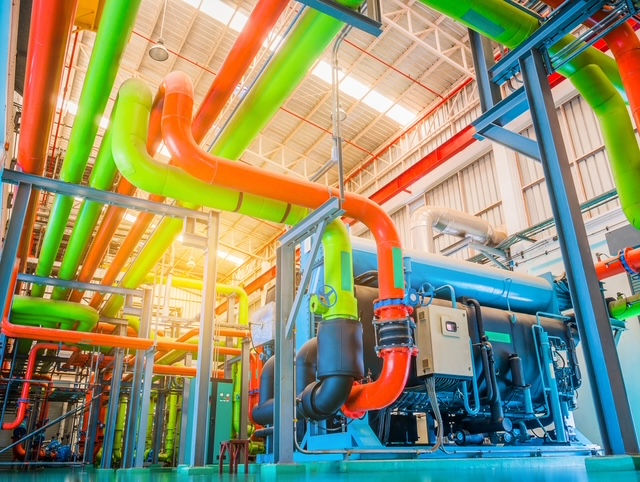HFC Refrigerant Phasedown: What the Transition Away from R410A Means for Your Facility
- MSC
- Apr 16, 2024
- 2 min read

MSC understands the importance of staying ahead of industry changes that could impact the operation of your building systems. One important change currently in progress is the phasedown of hydrofluorocarbon (HFC) refrigerants like R410A. These high global warming potential (GWP) refrigerants are being phased out worldwide to mitigate climate change.
The transition away from R410 bears some similarities to the R22 (HCFC) phasedown, which unfolded over a decade before complete prohibition in 2020. However, the industry-wide apprehension that accompanied the HCFC phasedown is not anticipated this time around.
During the early stages of the R22 ban, dire predictions of severe refrigerant shortages and skyrocketing costs resulted in excessive stockpiling and volatile price fluctuations, but many of these initial concerns proved to be largely overblown. Though R22 costs have increased significantly post-ban, as expected, the overall transition progressed more smoothly than anticipated.
Equipped with insights from the R22 transition, the HVAC industry is navigating the R410A phasedown with a more informed and pragmatic outlook. A notable distinction this time lies in the mildly flammable classification (A2L) of the emerging frontrunners to replace R410A. This designation necessitates more stringent handling protocols, compliance with new building codes, and compatibility considerations.
Though most existing equipment can continue operating without immediate disruptions, the phasedown will gradually reduce the availability of HFC refrigerants and increase their cost over time.
MSC is committed to helping our clients develop proactive strategies to ensure uninterrupted, efficient operations as they transition to low-GWP refrigerant alternatives. Here, we have compiled some important information regarding the HFC phasedown that building operators need to know.
Phasedown Timeline
Baseline levels calculated on average production and consumption levels from 2011- 2013:
2022-2023 — 90% of baseline levels allowed
2024 — 60% of baseline
2025 — 45% of baseline
2026-2033 — percentage of baseline decreases by 5% each year
2034-2035 — 4% of baseline
2036 and beyond — 15% of baseline allowed for servicing existing equipment
Implications for Your Facility
As R410A production decreases, you may face challenges such as:
Rising refrigerant costs and supply constraints
Potential compatibility issues with alternative low-GWP refrigerants
Need for specialized training on new refrigerant handling and safety
Regulatory compliance with phasedown timelines and evolving regulation
What Will Replace HFCs?
R32 and R454B, which are both A2L (mildly flammable) refrigerants, have emerged as the primary replacements for R410A
New Jersey and most other states have updated their codes to allow A2L systems
A2L refrigerants are safe when handled properly. New Jersey requires either a standard EPA 608 Technician Certification or an equipment-specific certification issued by an approved nationally recognized trade or certification program when handling A2L refrigerants.
Navigating the Transition
As R410A equipment approaches the end of its lifespan, owners should consider the following:
Conducting a regulatory review to ensure full building code, phasedown schedule, and refrigerant management compliance
Evaluating equipment to determine retrofit feasibility or replacement requirements
Developing a transition plan that aligns with your facility’s operational criticalities
MSC has mastered the complexities of maintaining HVAC systems in industrial, institutional, and mission-critical environments. Please contact us for more information on the HFC phasedown or to schedule a consultation.




Comments